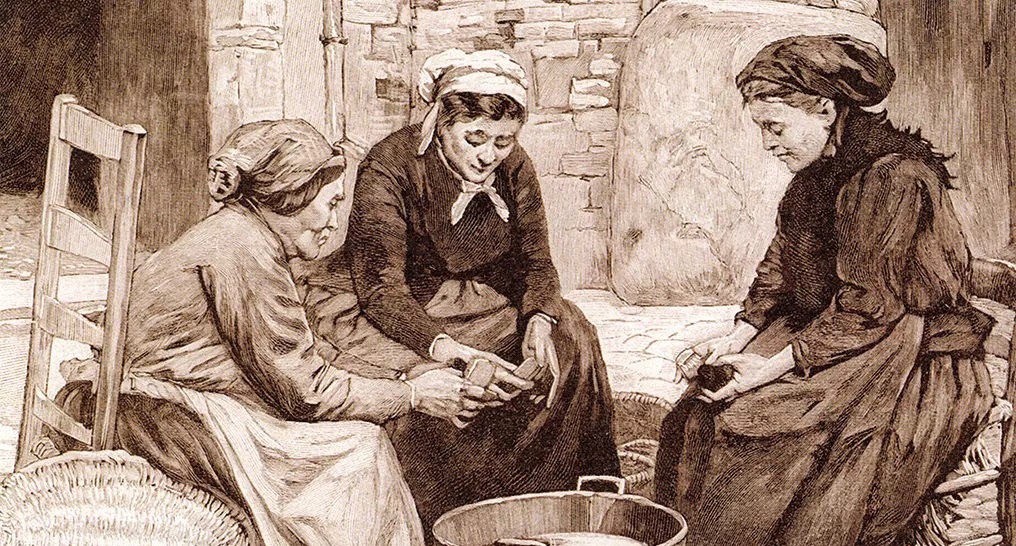
Financial Plan
It came to my attention that many of us started our orchards without completing a business plan. If your intention for the orchard is beyond the hobby, I strongly recommend […]
Home › Forums › Cultivating Truffles › Financial Plan
Tagged: business plan, financial plan, tool
- This topic has 6 replies, 4 voices, and was last updated 3 years, 7 months ago by
 Fabrice Caporal.
Fabrice Caporal.
-
AuthorPosts
-
-
December 3, 2020 at 5:43 pm #4301
 Fabrice CaporalKeymaster
Fabrice CaporalKeymasterIt came to my attention that many of us started our orchards without completing a business plan. If your intention for the orchard is beyond the hobby, I strongly recommend that you complete one. The Financial Plan is one of the main elements of the business plan that can help you evaluate potential income and expenses tied to your venture and assess the soundness of your investment.
Follow this link to create a copy of your own Financial Plan.
This is a Google Sheet document I have created for our Orchard. Please note that I am not a financial professional, and that I am not qualified to give any financial advice and that I am not making any guarantee to the accuracy or completeness of this tool. Feel free to use it as a starting point for your own project but use common sense and judgement.
Have fun!
-
July 3, 2021 at 6:32 pm #5332
Elizabeth Clark
ParticipantFabrice,
Thank you for this valuable information. It is very helpful to someone exploring the many nuances of truffle farming to include setting up a business plan.
Elizabeth Clark
-
July 21, 2021 at 5:47 pm #5461
Elise Baker
ParticipantHi Fabrice,
I’m looking forward to seeing how your plan compares to mine. I had to have one to apply for grant funding and it was of course an onerous task not being a financial planning professional myself.
Thanks for posting this information!
Elise
-
August 16, 2021 at 7:55 pm #5562
Michael Zablocki
ParticipantHello Fabrice, I am sharing a version of the financial model I used for my business submission. In a prior post I said I would, and I want to be good to my word. To provide some context, it is for a proposal in Ontario, Canada for a new farm (no prior land owned). I set the model to use the T. mel pricing data, as this seems to be the most common truffle people want to grow.
My model used many sources, some of which I chose to exclude, so there are some blanks in cells that would normally contain notes and references. If anyone is interested in these references I may be able to share them privately. But, Fabrice, I reference your model and some of the webinar presenters in this. If anyone has an issue with being referenced in this, please let me know and I will gladly remove your name and other related info.
I cannot guarantee the accuracy of the information I presented. But, I did a lot of research and tried my best to be as accurate and thorough as possible.
If there are any issue with opening it please let me know.
Lastly, this model tries to be very hard with the costs. You must make your own judgement on whether or not the costs are realistic or not. Of particular importance, I think some agriculture banks may let you do an interest only payment period, so that should definitely be explored. The model also assumes you sell exclusively wholesale at a 50% discount to retail rate.
Thank you.
-
August 16, 2021 at 9:06 pm #5564
 Fabrice CaporalKeymaster
Fabrice CaporalKeymaster@Michael Zablocki, thank you very much for sharing. This is great work! Several expenses I had not counted on my initial model:
- Tree replacement. We have experienced an average of 10% new tree mortality on the first year due to gophers and not surviving transplant. As the trees are getting older that rate drops significantly. We have decided to replace dead trees every year (of which we loose 10%…).
- Gophers: We are not leaving on the farm and had to contend with a severe infestation. In the initial plan we were anticipating to have help on the farm only once we would start producing. Because we need to put a constant pressure on the gopher population and because we could not keep up with a regular trapping schedule we had to resolve hiring a full time help.
- Tractor: We actually found a good used tractor on Craig’s List (Kubota M9000) for $28K. The implements though were quite costly. I would also recommend looking into the purchase of a professional grade zero turn mower.
- Liming: You will find that the amount of lime you will need depends directly to the buffering capacity of your soil. We had to add 40T/acre! In the cost of the lime you need to make sure it the delivered price. For us shipping was 1.5x the cost of the product!
- Production Ration: It looks like you are using data from Australia (starting production in year 5), I have heard of many truffieres that have not started production until much later.
- Inoculum: Are you planning to use truffle traps (Spanish Wells) or to reinoculated your orchard. These can be a significant cost.
- Dogs: Are you planning for having dog(s). There is a significant cost to acquire/train/maintain the dogs. Also if you do like us, wait for the dog, then you would have a cost for dog service to survey your orchard.
These are first thoughts in a random order. Thank you very much for your contribution to the community.
-
August 17, 2021 at 6:43 pm #5576
Michael Zablocki
ParticipantThanks Fabrice. All the info you just gave is really useful and could help improve the model.
- As you can see, the model I posted tried to follow the schedule proposed by Olivia Taylor in a recent webinar, which was to replant the orchard in segments in order to renew it. For simplicity, I chose to ignore the fact that you would likely also replant trees that did not survive.
- The start of production occurring in year 5 may not be realistic, but with the general data on truffieres including mismanaged/neglected farms, I thought it may be okay to suggest year 5 as a start of production date. Also, it seems like there is no real way to forecast this, so I based it off of some data from farms nearest to me. But, I agree that 5 years is optimistic, and that anyone should be prepared to see production start later.
- My thought was not to reinoculate, but to just replant with new trees every 20ish years. I did not come by much data on the costs of spanish wells, so if anyone has any insight on that it would be appreciated.
- You are totally right, I did not include the cost of the dogs!
Lastly, the model does imply that DNA testing of all trees occurs. This is not necessary for most truffle species, as DNA testing of a sample of trees is fine. But, if someone were to try and plant T. magnatum, DNA testing of every single tree would be necessary.
Appreciate the feedback and insight Fabrice. It all helps.
-
August 17, 2021 at 7:07 pm #5578
 Fabrice CaporalKeymaster
Fabrice CaporalKeymasterAt this point I did not factor the truffiere senescence. What I call re-inoculation is all the practices to increase the spore bank in the truffiere, truffle traps being one of them. Some argue that in our conditions it is a must for triggering production.
For our first re-inoculation experiment that we conducted last year, we used 4g of truffle per tree as a starting point. I don’t know if this was the optimum quantity (I think we erred on the heavy side) and I would love some feedback from others as well. We’ve conducted our first experiment with re-inoculation on three different rows with different formulas and we will see if it makes a difference. Once we will finalize on the substrate formula we will conduct experiments with the amount of truffles. Too many variables to handle at once.
To the direct cost of fresh truffle and DNA testing you need to add the cost of the substrate, which will depends on your formula, and the cost of labor and maybe the cost of the equipment you would use for the application. This adds up quite rapidly!
-
-
AuthorPosts
- You must be logged in to reply to this topic.